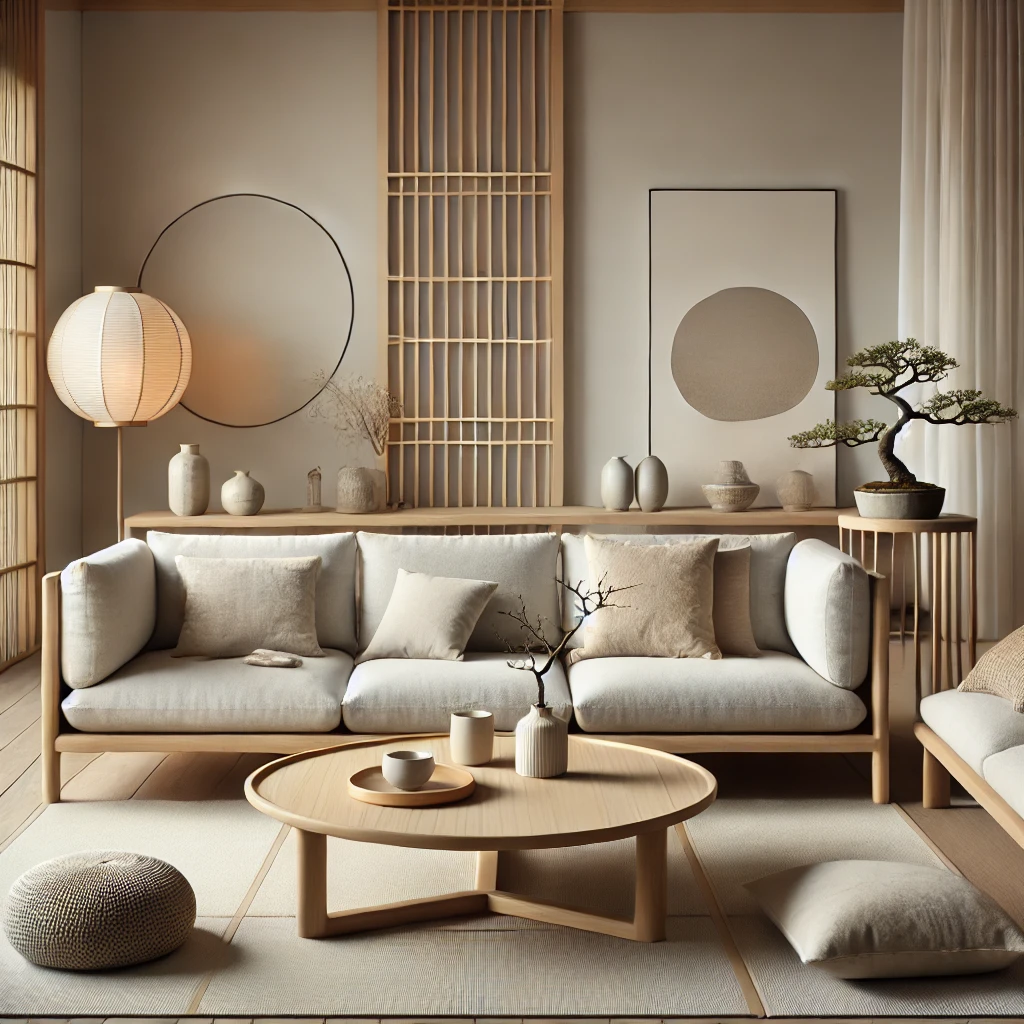Japandi style blends the simplicity of Japanese minimalism with the warmth of Scandinavian design, creating spaces that are both functional and serene. This design approach has gained popularity for its focus on natural materials, clean lines, and a balanced aesthetic.
This guide explores the key elements of Japandi style and how to incorporate them into your home through colour, furniture, and accessories.
1. The Essence of Japandi: Simplicity and Functionality
Where to Use It
Japandi design works well in any room but is especially suited for living rooms, bedrooms, and dining areas, where a calm and uncluttered atmosphere is key. In urban homes with limited space, its minimalist approach helps create a sense of openness.
How to Incorporate It
Start with a neutral colour palette of whites, greys, and beiges to set a tranquil backdrop. Low-profile furniture with clean lines, like a wooden bed frame or a simple sofa, enhances the minimalist aesthetic. Keep clutter to a minimum with built-in storage solutions that maintain an organised look.
Best Combinations
Natural materials such as wood, stone, and bamboo are essential in Japandi interiors. Soft textiles like linen, cotton, and wool add warmth and contrast to the sleek furniture. Accessories should be minimal—ceramic vases or potted plants can introduce texture and personality without overwhelming the space.
2. Colour Palette: Warm Neutrals and Subtle Contrasts
Where to Use It
Japandi colours create a cohesive look throughout the home but are particularly effective in bedrooms and living rooms, where a calming atmosphere is most important. Warm neutrals promote relaxation, making them ideal for creating a peaceful sanctuary.
How to Incorporate It
Use soft greys, off-whites, and light beiges for walls and large furniture pieces. For contrast, introduce charcoal grey or muted black through accessories like lamps, picture frames, or textiles. In kitchens and bathrooms, combine natural wood cabinetry with stone countertops to maintain an organic feel.
Best Combinations
Pair Japandi colours with warm wood tones to bring depth into the space. Soft blues or greens can be used sparingly for a nature-inspired accent. Textured elements like woven rugs or knitted throws enhance the overall aesthetic while keeping the space inviting.
3. Furniture: Beauty in Functionality
Where to Use It
Japandi furniture is adaptable and works well in home offices, dining areas, and small apartments, where space efficiency is essential. Its sleek, functional design makes it easy to integrate into various settings.
How to Incorporate It
Choose furniture that is both practical and aesthetically pleasing. A low wooden coffee table, a minimalist dining set, or a platform bed can serve as a focal point. Multi-functional pieces, such as storage benches or shelving units, help maintain an uncluttered look while adding practicality.
Best Combinations
Pair Japandi furniture with soft furnishings in natural fabrics for added warmth. Neutral or earth-toned cushions and throws soften the look of clean-lined wooden pieces. Lighting is also important—paper lanterns or simple metal fixtures enhance the understated elegance of the style.
4. Accessories: Minimalist and Intentional
Where to Use Them
Japandi accessories should be used thoughtfully, enhancing spaces like entryways, open shelving, or coffee tables. A few carefully selected pieces can add character without disrupting the minimalist feel.
How to Incorporate Them
Opt for accessories that serve both an aesthetic and functional purpose. Simple ceramic bowls, handmade pottery, or minimalist artwork add interest without creating clutter. In bathrooms, bamboo storage baskets or stone soap dispensers maintain the natural and refined aesthetic.
Best Combinations
Natural materials such as clay, stone, and wood are ideal for Japandi accessories. Indoor plants like succulents or bonsai trees introduce a subtle touch of nature. Soft lighting from candles or dimmable lamps helps create a warm and relaxing ambiance.
A Harmonious Balance
Japandi style balances the simplicity of Japanese minimalism with the inviting comfort of Scandinavian design. By focusing on a neutral colour palette, functional furniture, and carefully chosen accessories, you can create a space that feels both stylish and peaceful. This approach not only enhances aesthetics but also promotes a mindful, clutter-free lifestyle. Embrace Japandi design and transform your home into a calming retreat where form and function exist in perfect harmony.

